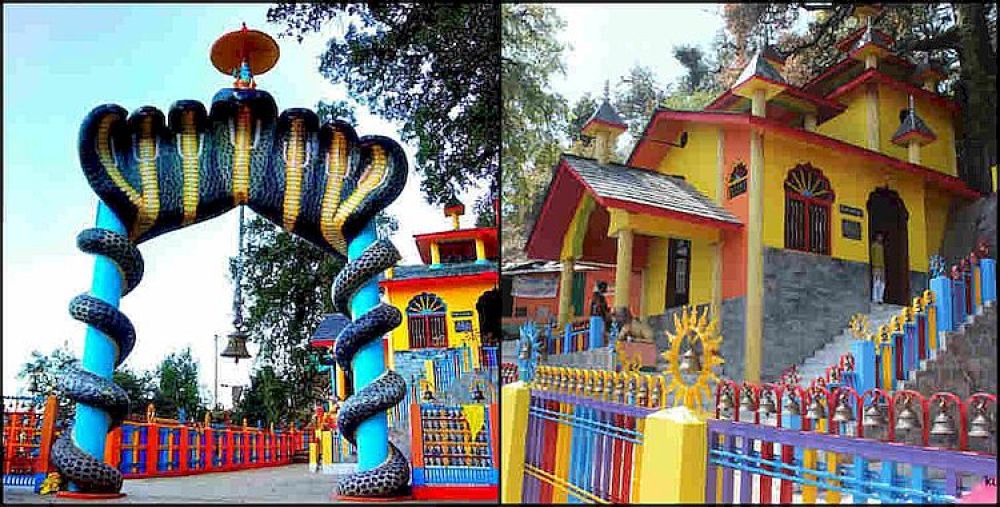Overview & Location:
There are temples dedicated to the Nag Devta (The Serpent God) spread across rural Uttarakhand (INDIA), often found on hilltops and sacred groves, worshiped by local communities.
Popular Nagraja/ Nag Devta Temples in Uttarakhand.
1. Nag Devta Temple, Mussoorie Road (Dehradun) – A famous and easily accessible temple known for fulfilling wishes.
2. Nag Raja Temple, Bhilangna (Tehri Garhwal) – Considered one of the oldest serpent temples in Garhwal.
3. Nag Mandir, Berinag (Kumaon) – Name Berinag comes from “Nag” – the area is rich in serpent deity worship.
About the Temple:
• These ancient temples are dedicated to Lord Nagraja, the King of Serpents, a divine figure in Hindu mythology symbolizing power, fertility, rainfall, and protection.
• The temple is simple in structure but highly sacred to the local community.
• It is believed that wishes made here with pure heart are fulfilled, especially related to protection from natural disasters and family prosperity.
Temple Architecture and Setting:
• These temples are usually simple stone shrines or small structures, often built near springs, rivers, or forested hilltops.
• Some temples feature stone idols, while others may simply have serpent symbols carved into rock or wood.
• The setting is serene, surrounded by nature, reflecting the deep connection between serpent worship and ecology.
Nag Raja (Serpent King) – The Deity:
In Hindu mythology, Nag Raja, also known as Nagraja, is the Serpent King and a powerful deity. The serpent gods, also known as Nag Raja, are associated with rainfall and weather patterns and are said to guard water bodies, fertility, and agriculture. According to local customs, they are also guardians of ancient spirits and hidden treasures.
Mythology, Legends & Beliefs:
• According to Garhwali mythology, Nag Devta appeared in dreams of saints or villagers instructing them to build a shrine at a particular spot.
• Following such divine encounters, numerous temples were built, strengthening local faith in the deity’s abilities.
• Since then, Nag Devta has been worshipped as a guardian of the region.
• There are also tales of Nag Devta protecting entire villages from snake bites, disease outbreaks, droughts, or enemy attacks.
Religious Significance, Festivals & Rituals:
• Nagraja Temple is a major center of folk worship, particularly among the Garhwali and Kumaoni people.
• Nag Panchami is celebrated with great devotion (Usually in July/ August). People fast, make offerings, and perform special pujas to appease the serpent god.
• It is believed that serpent gods protect the region from bad omens and natural calamities like landslides and floods.
• Devotees offer milk, turmeric, flowers, coconut incense, and sometimes live snakes are symbolically released as offerings and chant Nag-Mantras for blessings.
Tips for Visitors:
• Best time to visit: March to October (avoid monsoon due to landslides).
• Respect local customs and avoid stepping over sacred stones or images.
• Carry offerings like milk, coconut, and incense if planning to worship.
• Dress modestly as a sign of respect and follow temple rules, especially during Nag Panchami.
How to Reach:
• Nearest Railway Station: Dehradun/ Haridwar/ Kathgodam (for Berinag-Kumaon).
• Nearest Airport: Jollygrant (Dehradun)
• By Road: Most of the locations are well connected by road. Local taxis can be hired.
Ideal For:
• Spiritual seekers
• Nature lovers
• Pilgrimage tourism




